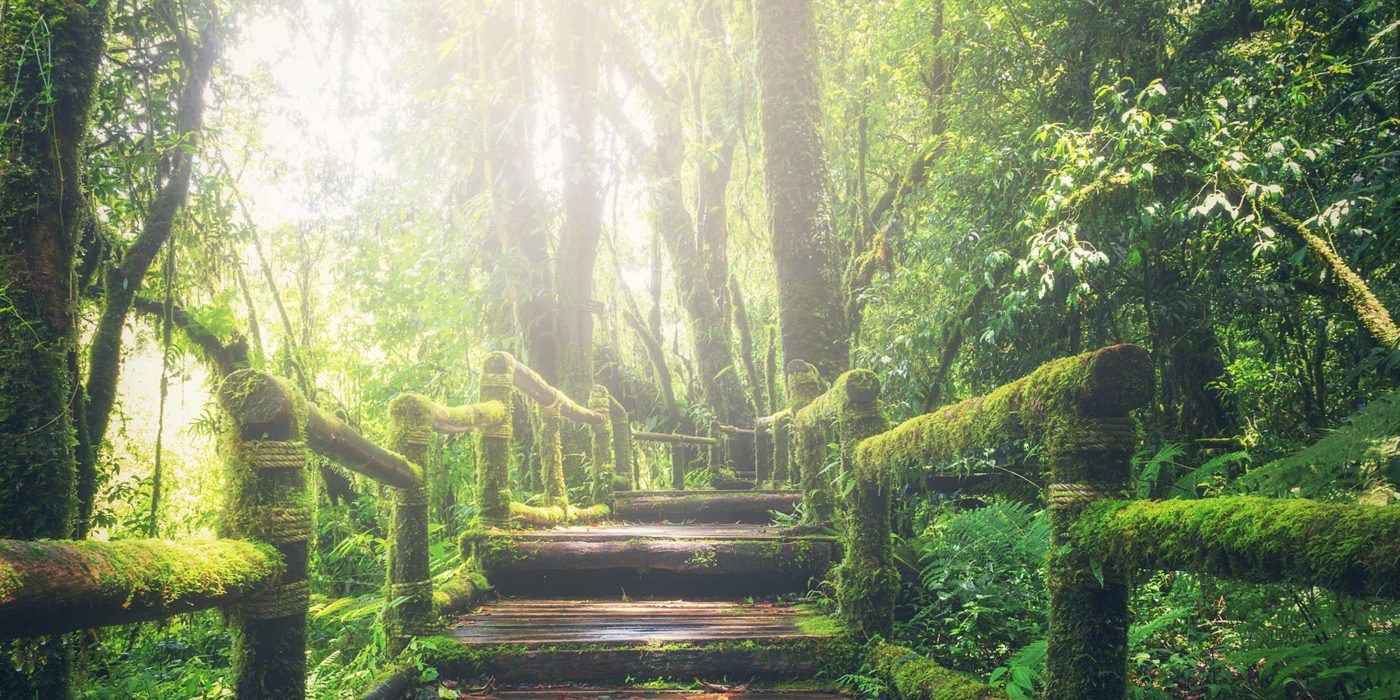Rainforests cover just 2.5 percent of the Earth’s surface, but hold over 50 percent of the world’s biodiversity. Losing them has immeasurable global impacts. A 2019 United Nations report found around 1 million animal and plant species are now at risk of extinction, more than ever before in human history. The US-based non-profit Rainforest Trust is responding to the threat with strategic land purchases supported by enthusiastic donors. To date, Rainforest Trust has saved 23 million acres of tropical rainforest lands.
Rainforest Trust’s fundraising success is notable, particularly since it ensures project donations aren’t touched by operating costs. In 2016, Rainforest Trust committed to raising $50 million by the end of 2020, to be matched by an anonymous donor. The global community is responding, with a recent $1 million donation from the foundation of American actor, writer and comedian Seth MacFarlane. Angela Yang, Chief Conservation Officer, told us more about how Rainforest Trust operates.
Parvati Magazine: Strong local partners are a key component of your conservation model. What are your criteria for selecting local partners?
Angela Yang: We use a multi-step process, refined from lessons learned, that helps us select the ideal local partners who share our mission and are (or will be) able to manage the protected area, hopefully for perpetuity. This begins with an online eligibility questionnaire tailored to our requirements. Once a potential project is identified, our conservation team works closely with prospective partners to build the proposal, as well as assess the partners. This exercise not only helps acquire the documents for a due diligence, it helps us gauge our working relationships.
Parvati Magazine: What are the most important factors leading to your notable success in inspiring national governments to establish parks and conservation areas?
Angela Yang: Our strong partners, and their engagement not only with government, but also with communities and other stakeholders. Conservation is complex and using the top-down and bottom-up approaches is key to build support—and sustainability—at all levels and echoes our focus on species, people and the planet.
Our model works…as shown in our three decades of successes. That isn’t to say that there aren’t challenges in this world of politics and unpredictable externalities. Our consistent mission, messaging and tenacity while working in complicated situations, and on equally complicated issues, are what continues to inspire our colleagues and partners in NGOs, communities, government to value the establishment of protected areas.
Parvati Magazine: Your new project, the 1.7 million acre Grand-Béréby Marine Protected Area (MPA) will be Côte d’Ivoire’s first MPA, protecting a key marine ecosystem and strengthening the conservation impact of the Dodo River Community-Managed Natural Reserve, which you helped to establish. Extending your work from rainforests into the oceans that affect them is new for you. How are you managing the transition?
Angela Yang:Cote d’Ivoire isn’t our first MPA: we already have two others, in Costa Rica and Bangladesh respectively. While we, as Rainforest Trust, don’t focus on marine conservation, we consider certain marine and freshwater projects that strengthen the conservation of a greater landscape/seascape that we helped establish. So, this isn’t a transition for us, but rather an evolution.
Grand-Béréby will be our first “ridge to reef” project, linking adjacent terrestrial and marine protected areas in a holistic approach that protects watersheds, which are critical to life on Earth for all of us. And with watershed protection, we’re able to also safeguard biodiversity, ecosystems, climate and livelihoods.
Parvati Magazine: Your board members cover operating expenses, allowing 100 percent of project donations to be allocated to conservation action—a principle we also follow at Parvati.org. How did this situation evolve at Rainforest Trust and how do you sustain it?
Angela Yang: The model of board members and other select donors covering our operating expenses has been a central part of Rainforest Trust’s approach from the very beginning. We work hard to run as efficiently as we can. This can be challenging in a period of significant growth, but it has helped us maintain focus as we make decisions on processes and operations.
Parvati Magazine: You now support your on-the-ground partner teams with Fellows and Guardians programs, including the Partner retreat that brings conservationists together. How has this changed the work you do?
Angela Yang:We’ve hosted partner retreats since 2016 and recognize that the sustainability of our protected areas relies on building the capacity of our partner organizations, as well as individuals, to be able to continue and expand the conservation work that we initiated. This integral piece of our work only makes our projects stronger.
And we do this through not only building partner capacity, but also looking at alliances with like-minded organizations doing similar work to capitalize on strengths and improve our ability to deliver impact.
“We are fully supportive of the establishment of strategic and sustainable protected areas, on land or at sea.”
– Angela Yang
Angela Yang, MSc, is Chief Conservation Officer with Rainforest Trust, a non-profit that purchases and protects the most threatened tropical forests, saving endangered wildlife through partnerships and community engagement. Yang brings to her role decades of conservation experience from strategic planning to working with governments to boots-on-the-ground fieldwork.












